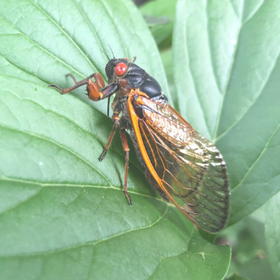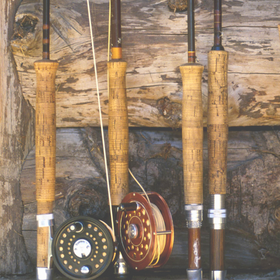Streamers are that class of flies that are meant to imitate other fish, leeches, crustaceans, or anything that is not of insect variety. They are used to catch everything; trout, bass, steelhead, salmon, stripers, you name it, they have caught it. We are fond of saying ‘big fish, eat little fish’, and this is a truth that fly fishers cannot deny.
But when talking streamers there is another truth almost as important, ‘big fish are territorial.’ It is unclear how many strikes are based on the desire to eat and how many are based on the desire to defend. There are many thousands of sea-run fish caught every year whose digestive system has shut down who are only interested in spawning. Many other sea-runs metabolism changes so they have little interest in feeding, yet these fish are caught year after year, primarily on streamers. And to be sure trout, bass and other non-migratory species also are hooked after sparking their territorial instinct rather than their feeding instinct.
Bigger fish tend to be more territorial than smaller fish; bigger fish tend to eat smaller fish more than average fish. Therefore using our algebraic logic, bigger fish will be caught using imitations of smaller fish; hence one of the major benefits of using streamers.
There are many techniques to improve your streamer catch. Most of them involve imparting action on your streamer with your rod tip or stripping motion. One such technique involves preferably casting toward the bank, but also works well casting towards gravel bar, island, rock, current seam, or any natural holding spot. After the cast, which by the way does not need to be a dainty precise affair ala dry fly casting, one allows the current to naturally bow the fly line that should be lying on the surface. And then the strip begins. For extra action lift the rod tip, this should be parallel to the water, about a foot to two feet, then strip, repeat until the fly is back to you. It is important that the bow in the line be noticeable as this will point the fly downstream or at least across stream to you. Normal strip techniques that call for stripping at the end of the wet fly swing have the streamer’s nose pointed up stream, not very natural.
The above technique allows you to cover a lot of water in a day, although it is feverishly paced. The strikes you get will be a reward unto itself. It is also an excellent technique for drift boats, but can be done while wading smaller streams as well. Smaller streams have the advantage of having fewer holds for large fish.
For deeper water, try positioning yourself below the deep water seam. Cast upstream, mend the line, and allow your fly to sink. Again impart action on the fly as it drifts back towards you. Make occasional strips and mends to keep the fly deep and twitching. This technique works well when fish seek protection of deeper water. Warm, bright days, low water periods, or from heavy pressure. In general it is a good middle of the day technique when nothing else appears to be happening. A hook up in deep water can initially feel like a snag that gradually begins moving as the fish realizes its mistake.
Streamers can greatly improve your chances of catching that trophy, and also stretch out the fishing day and season. Because it matters not what time of year it is ‘big fish eat and chase little fish.’
Recommended Readings: Strip-Set: Fly-Fishing Techniques, Tactics, & Patterns for Streamers



